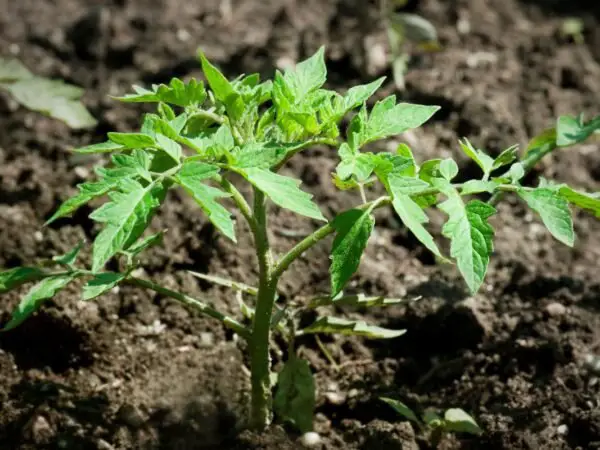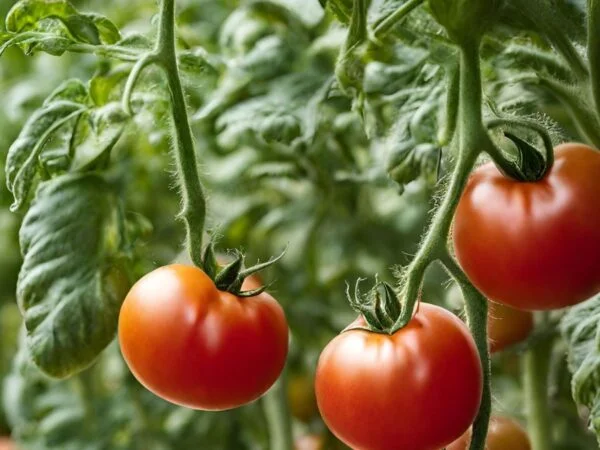Seedling Stage of Tomato Plants
During the seedling stage of tomato plants, the germinated seeds begin to develop into small, delicate plants. This stage typically occurs a few days after the germination process. At this point, the seedlings are still very small and fragile, with thin stems and tiny leaves. They require proper care and attention to ensure their healthy growth.
As the tomato seedlings emerge from the soil, they display their cotyledons, which are the first leaf-like structures to appear. These cotyledons play an essential role in providing the necessary nutrition for the young plants until they can perform photosynthesis on their own. Typically, these initial leaves are pale green in color and have a slightly different shape than the true leaves that will develop later. The cotyledons gradually unfurl, allowing the seedlings to absorb sunlight and continue their growth.
Germination Process of Tomato Seeds
When it comes to the germination process of tomato seeds, several key factors play a crucial role. Firstly, temperature is a critical determinant. The optimal temperature for germination ranges from 20-30 degrees Celsius, ensuring that the seeds receive the right conditions to sprout. Additionally, adequate moisture is essential, with the seeds needing consistent water supply to initiate the germination process. Proper drainage is also necessary to prevent waterlogging, which can hinder the growth of tomato seeds.
It is worth noting that the germination process of tomato seeds is highly dependent on light conditions. Unlike some plant species, tomatoes require darkness to successfully germinate. Covering the seeds with a thin layer of soil or using a seed tray with a lid can effectively create the desired darkness needed for germination. Furthermore, it is important to keep the seeds in a well-ventilated area to prevent the growth of mold or fungi. By following these guidelines, gardeners can ensure optimal conditions for tomato seed germination, leading to healthy and thriving seedlings.
Emergence of Tomato Seedlings
Seeds hold the potential to bring forth new life, and the emergence of tomato seedlings is a testament to this wondrous phenomenon. As the seeds begin to break free from their protective coat, tiny shoots emerge, searching for light and nourishment. This delicate process, known as germination, marks the beginning of the tomato plant's journey.
The emergence of tomato seedlings is a sight to behold. The tiny green stems with their first pair of leaves, known as cotyledons, rise above the soil, eager to explore the world. These initial leaves provide nourishment to the young plant until true leaves, with their distinct serrated edges, start to appear. With each passing day, the tomato seedlings become stronger, stretching towards the sky, their growth fueled by the sun's radiant energy. As they continue to display their unique characteristics, the emergence of tomato seedlings offers a glimpse into the marvels of nature's life cycle.
Appearance of Tomato Cotyledons
Tomato cotyledons, also known as seed leaves, are the first set of leaves to emerge from a germinating tomato seed. These cotyledons play a crucial role in the early growth stages of tomato plants. Typically, tomato cotyledons are shaped like small, oval leaves with a pale green color. They serve as a source of stored energy for the seedling until it is able to produce true leaves through photosynthesis. The appearance of tomato cotyledons is a significant indicator that the germination process is successful and the seedling is ready to embark on its journey towards becoming a mature tomato plant.
One of the distinctive features of tomato cotyledons is their temporary nature; they are eventually replaced by the true leaves of the plant. While cotyledons do not resemble the typical shape and structure of mature tomato leaves, they play a vital role in providing nutrients for the initial growth of the seedling. As the cotyledons provide important resources for the emerging tomato plant, they gradually wither away and are replaced by the first true leaves. These true leaves, unlike the cotyledons, exhibit the characteristic shape, size, and lobed structure commonly associated with tomato plants.
Development of Tomato Stem and Leaves
The development of tomato stem and leaves is a crucial phase in the growth of tomato plants. As the seedling continues to grow, the stem elongates and becomes stronger, providing a sturdy framework for the plant. The stem also plays a vital role in transporting water, nutrients, and sugars throughout the plant, ensuring its overall health and survival.
In addition to the stem, the leaves of tomato plants undergo significant changes during their development. Initially, the seedling starts with simple, tiny leaves known as cotyledons, which are responsible for the early photosynthesis process. As the plant matures, the true leaves begin to appear, characterized by their distinct shape and serrated edges. These leaves are essential for capturing sunlight and converting it into energy through the process of photosynthesis. Overall, the development of tomato stem and leaves contributes to the growth and vitality of the plant, ultimately enabling the production of healthy and flavorful tomatoes.
- The stem of a tomato plant elongates and becomes stronger as the seedling grows
- The stem provides a sturdy framework for the plant's overall structure
- The stem transports water, nutrients, and sugars throughout the plant to ensure its health and survival
- Tomato leaves start with cotyledons, which are responsible for early photosynthesis
- True leaves develop as the plant matures, characterized by their distinct shape and serrated edges
- True leaves capture sunlight and convert it into energy through photosynthesis
- The development of tomato stem and leaves contributes to the growth and vitality of the plant
- Healthy stems and leaves enable the production of flavorful tomatoes.
Formation of Tomato Root System
The formation of tomato root system is a critical phase in the growth and development of tomato plants. During this stage, the small and delicate root hairs begin to emerge from the main root, gradually branching out and extending into the surrounding soil. These root hairs play a crucial role in absorbing water and nutrients from the soil, providing essential sustenance for the overall growth of the plant. As the root system continues to develop, it becomes more complex, with the main root growing deeper into the ground and numerous lateral roots spreading horizontally. This extensive network of roots helps anchor the plant in the soil, providing stability, and also facilitates the uptake of water and nutrients, ensuring optimal nutrition for the tomato plant.
The formation of a well-developed root system in tomato plants is influenced by various factors, including soil composition, moisture levels, and temperature. The quality and quantity of water available to the plant are particularly important during this stage. Proper watering and drainage are crucial to ensure that the roots can efficiently absorb water and nutrients while avoiding waterlogging, which can lead to root rot. Additionally, the presence of organic matter in the soil promotes the growth of beneficial microorganisms that aid in the breakdown of nutrients, enhancing their availability to the roots. Overall, the successful formation of a robust root system is vital for the healthy growth and productivity of tomato plants.
Early Growth Stages of Tomato Plants
After the emergence of tomato seedlings, the early growth stages of tomato plants begin. During this phase, tomato plants start to develop their true leaves. These leaves are different from the cotyledons that initially appeared in the seedling stage. True leaves are usually green, broad, and have a more defined shape compared to the cotyledons. As the tomato plants continue to grow, the stem also elongates, allowing the plant to reach for sunlight. The stems become sturdier and start to branch out, providing support for the developing plant.
Simultaneously, the root system of the tomato plants becomes established. The roots grow in length and spread outwards, anchoring the plant in the soil and absorbing nutrients and water for growth. The root system plays a crucial role in providing stability and nourishment to the tomato plant. Moreover, it aids in the uptake of essential minerals required for the plant's overall development. As the early growth stages progress, the tomato plants become more robust and capable of sustaining further growth and fruit production.
Characteristics of Baby Tomato Plants
Baby tomato plants, also known as tomato seedlings, are the result of successful germination and emergence of tomato seeds. At this stage, they exhibit distinct characteristics that distinguish them from fully grown tomato plants. One notable feature is their small size, with an average height ranging from 10 to 15 centimeters. Their stems are delicate and tender, displaying a vibrant green color. The leaves, although petite, are vibrant and display the iconic serrated edges commonly associated with tomato plants. Despite their miniature stature, baby tomato plants already possess the potential for growth and development, which will lead to the formation of a fruitful tomato plant.
Apart from their size, baby tomato plants also have a unique aroma. As one approaches them, a mild, earthy scent permeates the air. This natural fragrance is a result of the essential oils present in the leaves and stems. Additionally, baby tomato plants are characterized by their strong root systems. Though not visible above the ground, the roots quickly establish themselves, branching out to anchor the plant and absorb essential nutrients and water. These well-developed roots contribute to the overall vigor and resilience of the baby tomato plants, ensuring their successful transition into mature tomato plants.
Distinctive Features of Tomato Seedlings
As tomato seedlings begin to emerge, several distinctive features can be observed. One notable characteristic is the presence of two cotyledons, which are the first leaf-like structures to appear. These cotyledons are usually green and help provide nourishment to the young seedling until it can establish a proper leaf system for photosynthesis.
Another distinctive feature of tomato seedlings is the development of their stem and leaves. The stem is typically thin and delicate, yet strong enough to support the growing plant. As the seedling continues to grow, several pairs of true leaves will form. These leaves often have a slightly hairy texture and can range in shape from ovate to lanceolate, depending on the tomato variety. Additionally, the leaves may exhibit a vibrant green color, enhancing the visual appeal of the seedling.
Morphology of Tomato Seedlings
The morphology of tomato seedlings provides valuable insights into the early growth stages of these plants. At this stage, the tomato seedlings have two cotyledons, which are the first leaves to emerge from the seed upon germination. These cotyledons serve as energy reserves for the young plant until it can photosynthesize on its own. They are usually thin and elongated, with a slightly greenish color, reflecting their role in capturing sunlight.
As the tomato seedlings continue to develop, their stem begins to elongate and thicken. The stem is generally green in color, and it grows vertically upwards to support the growth of the emerging leaves. Along the stem, small bumps known as leaf primordia can be observed, which are the early signs of future leaves. These primordia gradually develop into true leaves, which are typically larger and more complex in structure compared to the cotyledons. The first true leaves usually have a slightly jagged or serrated edge, distinguishing them from the smooth edges of the cotyledons.
What is the seedling stage of tomato plants?
The seedling stage of tomato plants refers to the early growth phase of tomato plants after germination, when they have just emerged from the soil.
How does the germination process of tomato seeds occur?
Tomato seeds germinate when they are provided with the right conditions of moisture, warmth, and oxygen. The seed coat splits open, and a small root emerges followed by the shoot.
When does the emergence of tomato seedlings occur?
The emergence of tomato seedlings occurs once the root and shoot have developed enough to break through the soil surface.
What do tomato cotyledons look like?
Tomato cotyledons are the first pair of leaves that appear after the emergence of seedlings. They are usually oval-shaped and serve as energy reserves for the young plant.
How does the stem and leaves of tomato seedlings develop?
The stem of tomato seedlings grows upward, branching out with the development of new leaves. The leaves start as small, narrow structures and gradually increase in size as the plant grows.
How does the root system of tomato seedlings form?
The root system of tomato seedlings forms as the primary root elongates and secondary roots develop. These roots play a crucial role in nutrient uptake and anchoring the plant.
What are the early growth stages of tomato plants?
The early growth stages of tomato plants include seed germination, emergence of seedlings, development of stem and leaves, and the formation of the root system.
What are the characteristics of baby tomato plants?
Baby tomato plants are typically small in size, with tender stems, and leaves that are still developing. They require proper care and optimal growing conditions for healthy growth.
What are the distinctive features of tomato seedlings?
Tomato seedlings can be identified by their small size, delicate leaves, and the presence of cotyledons. They often exhibit a vibrant green color and a compact growth form.
Can you explain the morphology of tomato seedlings?
The morphology of tomato seedlings encompasses their overall appearance, including the development of stems, leaves, cotyledons, and roots. Understanding their morphology helps in identifying and monitoring their growth stages.
Image Source: Paid image from CANVA





